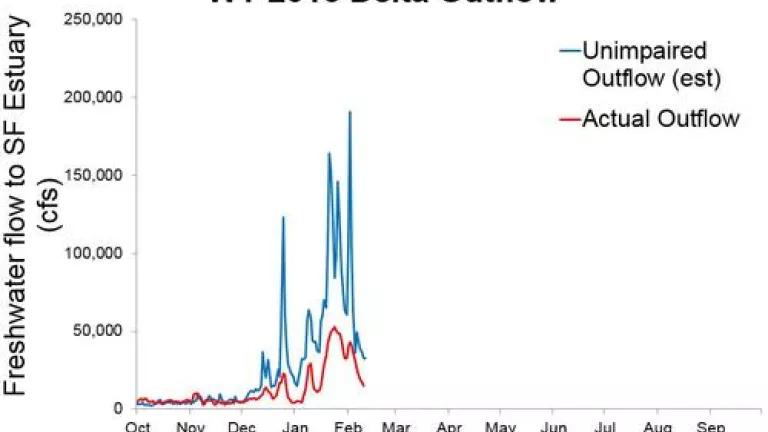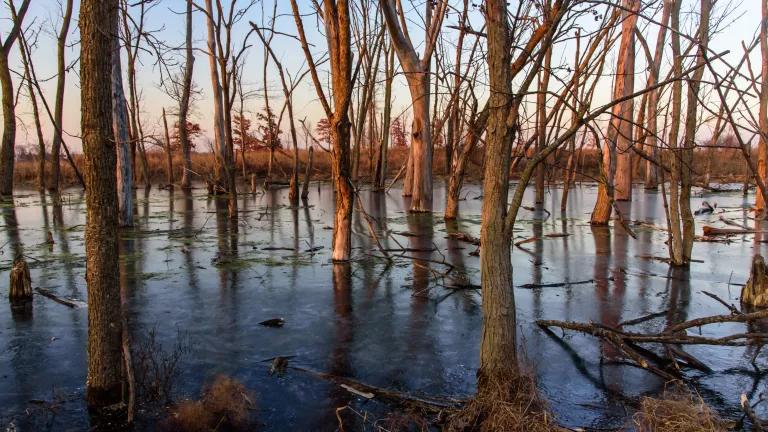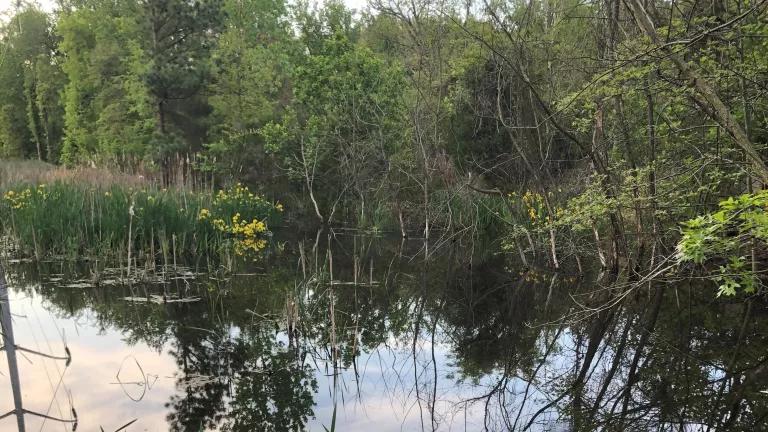
The Department of Water Resources recently released an estimate of how much additional water would have been diverted from the Delta in January and part of February if the proposed Delta tunnels (California WaterFix or BDCP) had already been built. We have asked the State to make the underlying analysis and modeling available, to better inform ourselves, the public and decision-makers about the proposed project and alternatives. For instance, how much would doing so have reduced Delta outflow? What assumptions were they using regarding bypass flows, post-pulse protections, and reverse flows in the South Delta? And how much of the 9,000 cfs capacity would have actually been used, and for how long during that period?
But one thing is already clear, before delving into the details of the modeling - the State's estimate of additional water supply that the tunnels would have made available over this short period of time is misleading someone - we just don't know who's getting the bait and switch.
On the one hand, the State's recent statements suggest that the Tunnels truly are about taking more water from the Delta, rather than protecting fish and wildlife and reducing reliance on water supply from the estuary as required by State law. Conservation groups, Delta farmers, fishermen, and many other stakeholders are rightly concerned that the proposed WaterFix will increase water exports in and upstream of the Delta and worsen water quality for farmers and fisheries. Under some operational proposals, WaterFix will significantly increase average exports from the Delta and greatly worsen conditions for salmon and other native wildlife. In addition, the state's waiver of environmental protections during the drought, in order to increase water supply for the CVP and SWP, undermines the trust that a new facility would be operated according to the rules, even if those rules were adequately protective to begin with.
On the other hand, the State has repeatedly claimed that, on average, WaterFix will not increase water exports from the Delta under the misnamed high outflow scenario, which largely maintains the inadequate Delta outflows that exist today in the spring and worsens conditions in the winter. Numerous agencies and scientists have concluded that these existing outflows fail to protect water quality and the environment. But if Delta exports on average don't increase, for every time period that the modeling shows there will be increased water exports from the Delta, there are time periods when WaterFix will result in an equal reduction in water exports compared to today. And for all the time periods when the new facility will not be used, or will result in reduced exports, the contractors will still have to pay for the costs of the new facility. That means that, if the Tunnels maintain about the same level of exports on average as today, the proposed WaterFix will result in more than 1 billion dollars in debt payments each year in 2014 and 2015, with no additional water supply - money that could otherwise be devoted to more water recycling, stormwater capture, habitat restoration, and other real fixes for California's broken water system.
Of course, the SWRCB, state and federal agencies, and numerous independent scientific reviews have already indicated that current water diversion levels are unsustainable and harm the public's interest in clean water and abundant fish and wildlife populations. The amount of water flowing through the Bay-Delta estuary and into San Francisco Bay is one of the strongest indicators of the health of the estuary's fish and wildlife. Similarly, the amount of water flowing through the Delta is critical to maintain water quality for farmers, cities, and fisheries in the Delta. In 2010, the State Water Resources Control Board recommended that 75% of the unimpaired runoff in the Bay-Delta watershed from January to June should be allowed to flow through the estuary, limiting diversions and storage to 25%. In contrast, in January 2016 - the month that DWR estimates WaterFix would increase exports - approximately 60 percent of the runoff in the Bay-Delta watershed was captured or diverted, resulting in far less of the unimpaired flow making it through the Delta than what scientists recommend for a healthy estuary.
The failure to meaningfully improve Delta outflows in WaterFix/BDCP is a big reason why the State Water Resources Control Board noted in its recent order on the tunnel petition, "The appropriate Delta flow criteria will be more stringent than petitioners' current obligations and may well be more stringent than the petitioners' preferred project." (page 4) If the State Water Resources Control Board or other regulatory agencies require more flow through the Delta (more than the 40% that made it in January 2016), then WaterFix would not have yielded any additional water supply in that month.
I'm certainly curious to see the modeling that DWR used, and would love to see that data for the past 3 years as well. I continue to believe that new conveyance - if properly sized and operated to take less water from the Delta on average - could be part of a broader portfolio of water supply solutions. But to my knowledge, the State has never modeled how existing conveyance would compare to new conveyance alternatives with biologically realistic Delta outflow requirements - significantly higher delta outflow than today. That kind of analysis is critical for informed decisionmaking. And of course, by waiving the operating rules over the past several years, the state and feds have significantly damaged the trust that a new facility would be properly operated.
But to get back to the beginning, and the claims that WaterFix would increase diversions in January 2016 - either the water districts who would pay for the tunnels are being misled because the project on average will result in similar exports, or conservation and fishing groups are being misled because the project on average will result in increased exports.
So, DWR, which is it - does BDCP/WaterFix increase exports from the estuary on average, or not?



